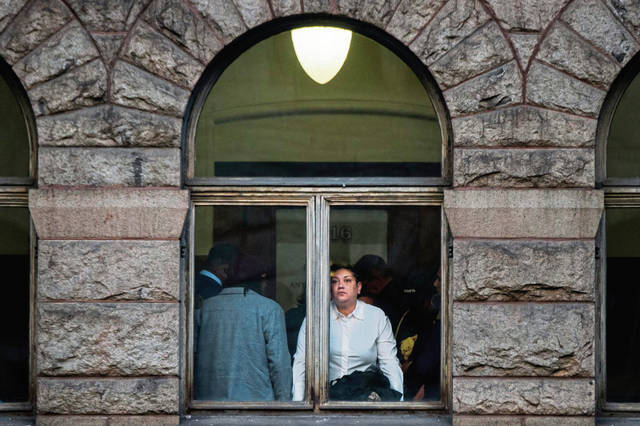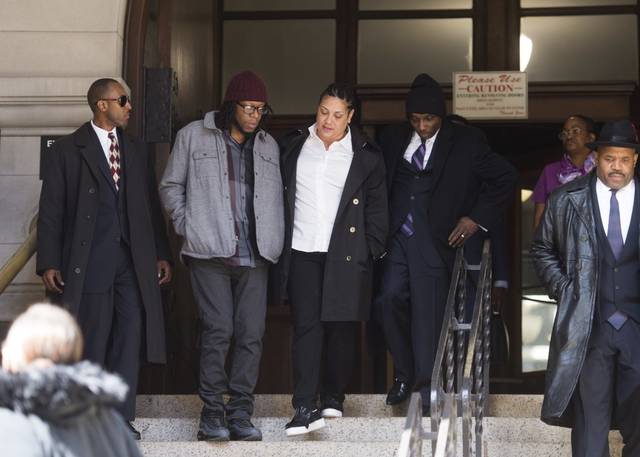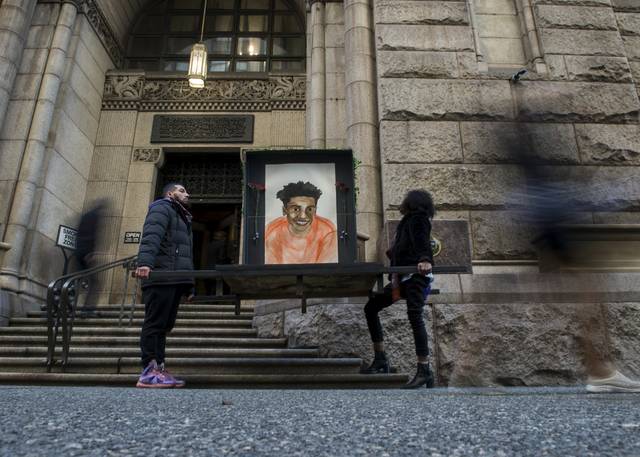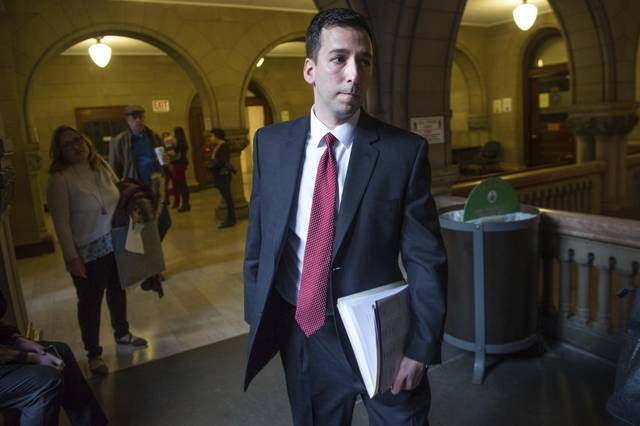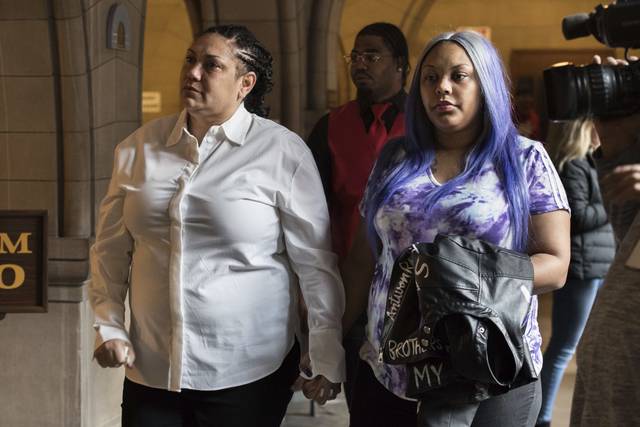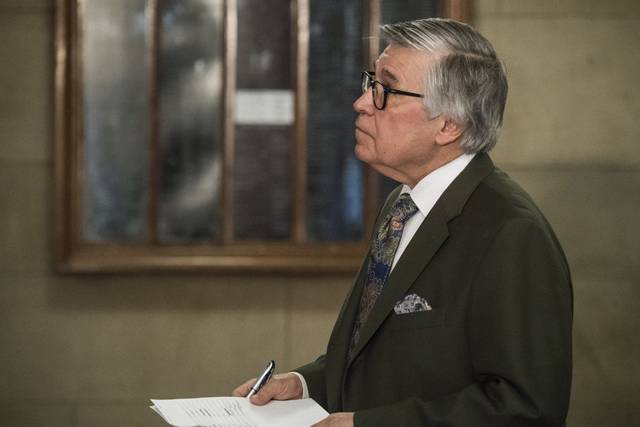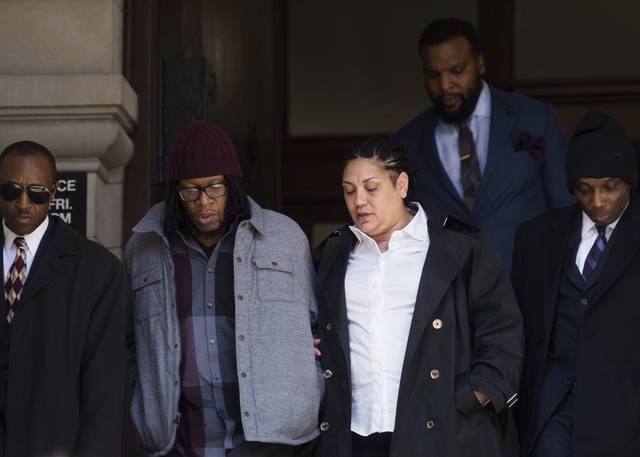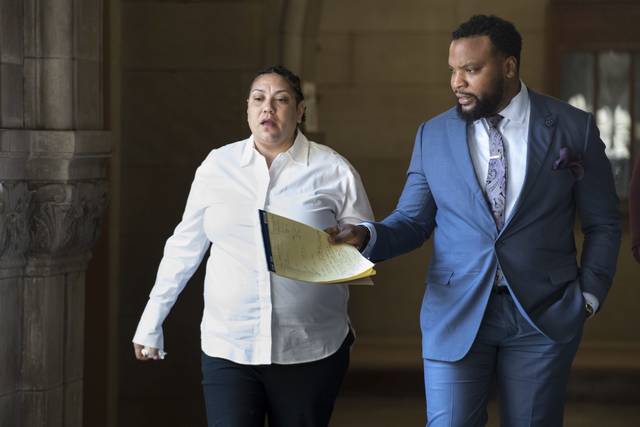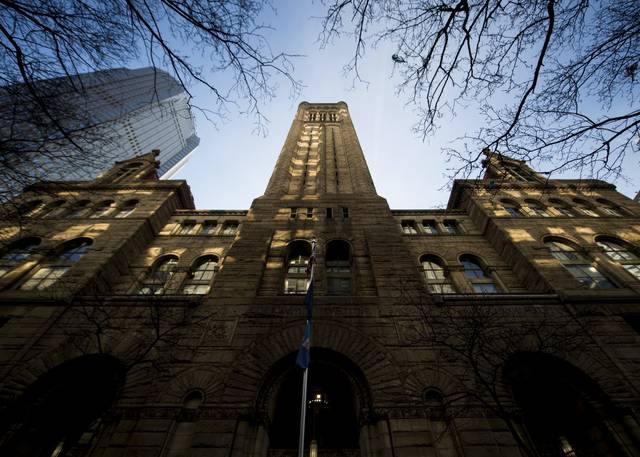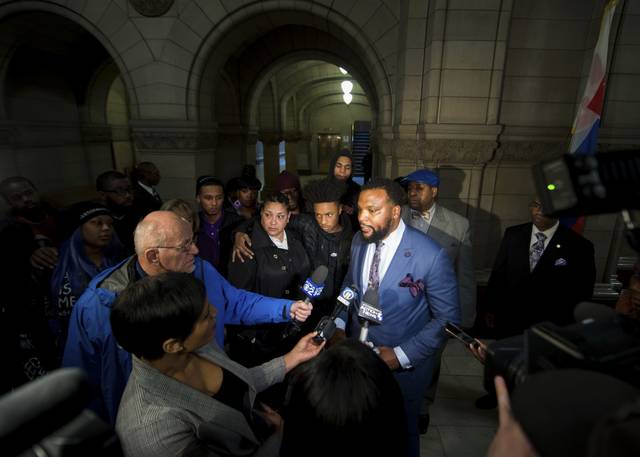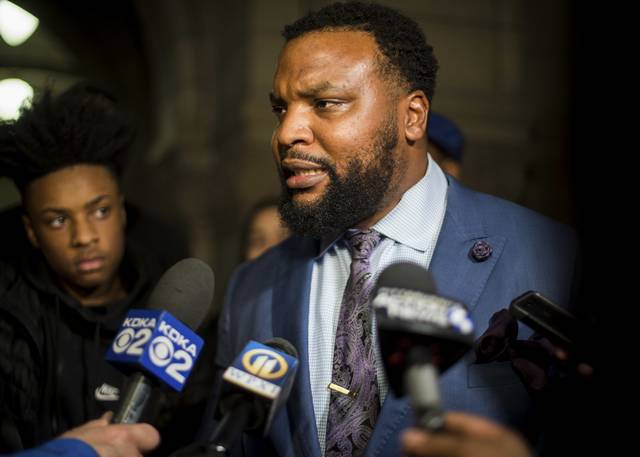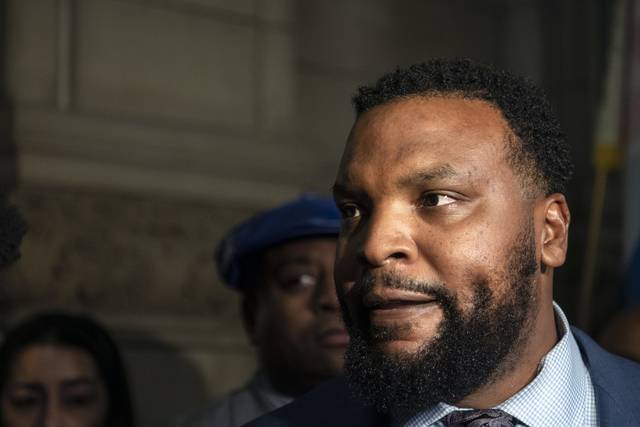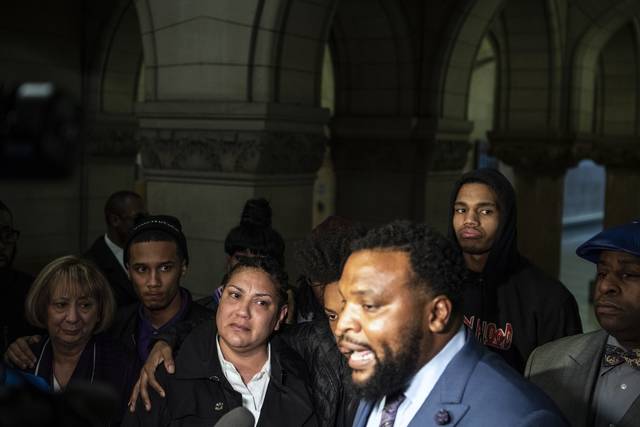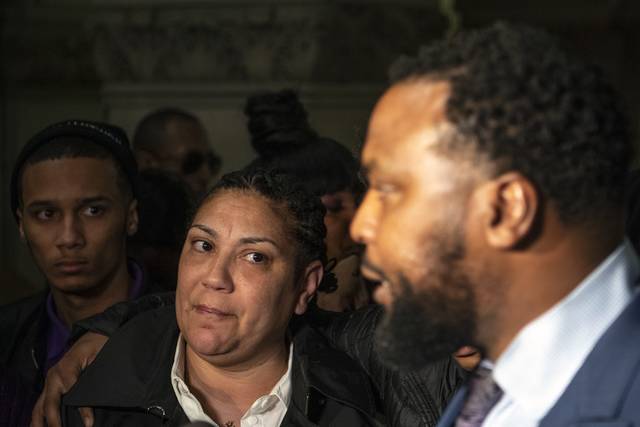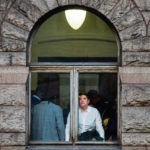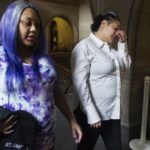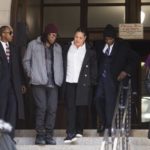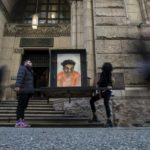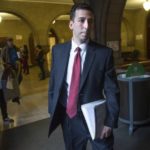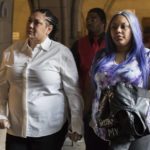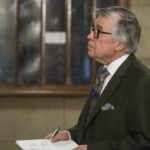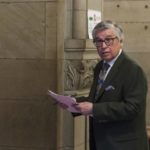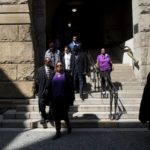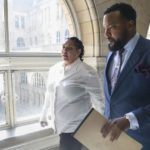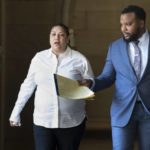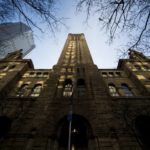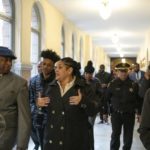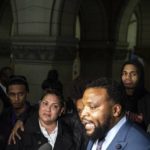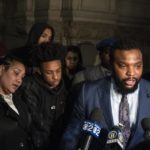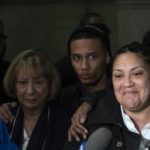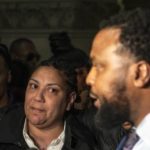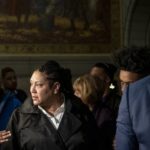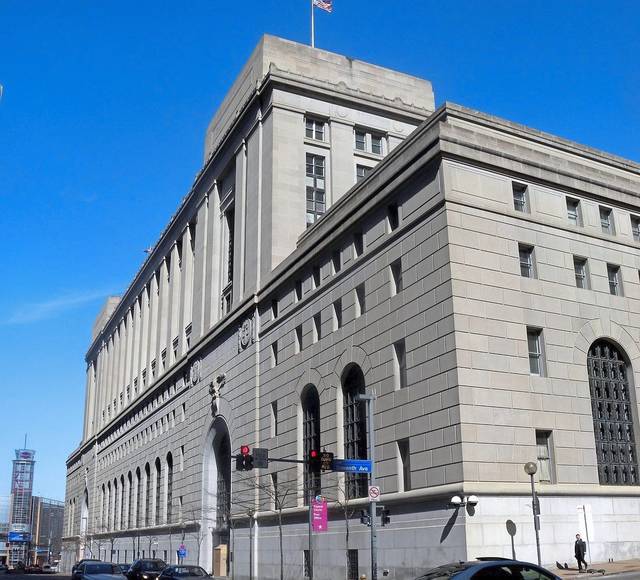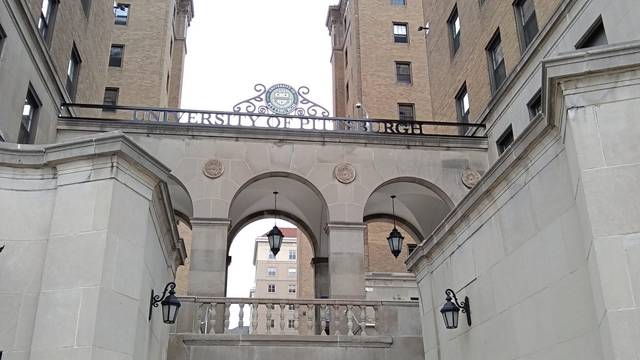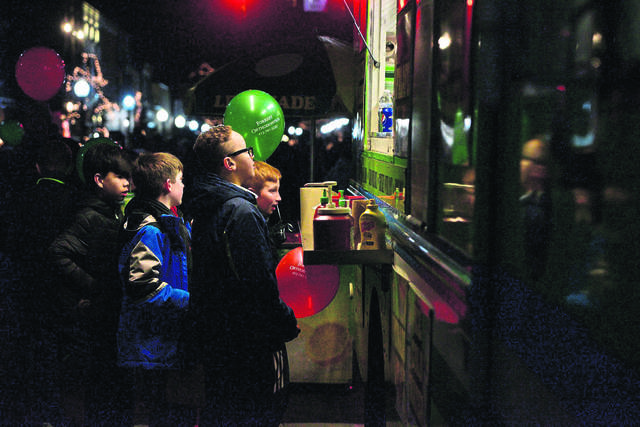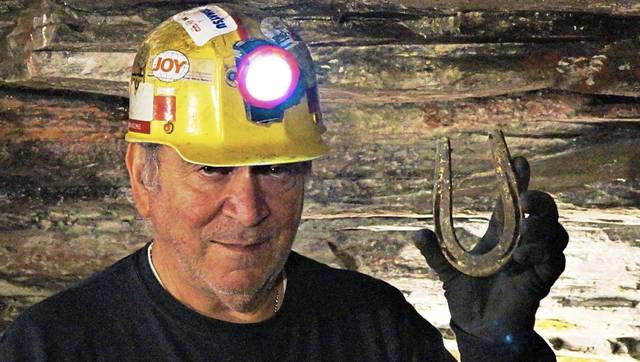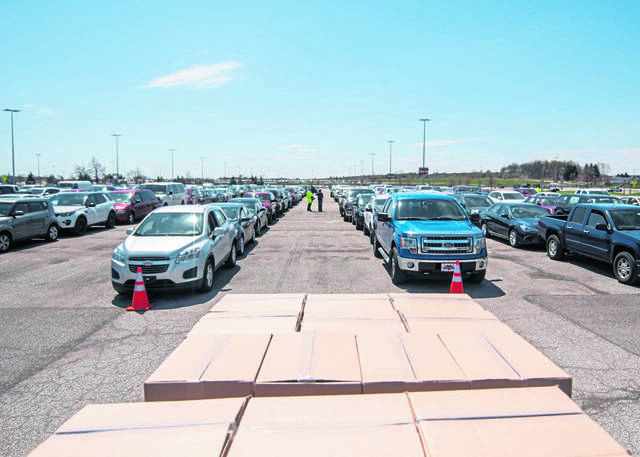The homicide trial of former East Pittsburgh police officer Michael Rosfeld began Tuesday, with proceedings getting underway around 9:30 a.m. in Room 313 of the Allegheny County Courthouse.
Rosfeld is accused of shooting Antwon Rose II three times as he ran from a June 19 traffic stop in East Pittsburgh. Common Pleas Judge Alexander Bicket is presiding over Rosfeld’s trial. Chief Trial Deputy District Attorney Daniel Fitzsimmons and Assistant District Attorney Jonathan Fodi are prosecuting the case. Patrick Thomassey is representing Rosfeld.
The Tribune-Review is providing trial-related coverage from inside and outside the courtroom. Here are updates:
6:25 p.m.
S. Lee Merritt, an attorney for the Rose family, addressed the media after court concluded for the day. He shared reservations about how the trial is proceeding so far.
“The most difficult thing for this family is, during this trial process, is watching this case go on and not having Antwon Rose’s real story actually be told,” Merritt said, addressing the media in the main lobby of the Allegheny County Courthouse. “There’s been no perspective on Antwon’s life, who he truly was. His humanity has been absent so far from this trial.”
Michelle Kenney, Rose’s mother, stood near Merritt in tears.
So far, testimony has focused on details of what happened and when the evening of June 19. Both the prosecution and defense spent the day questioning witnesses about the specifics of what they saw and heard.
Merritt said he is going to respect the prosecution’s approach and acknowledged that they likely have a strategy. But that doesn’t make the testimony any easier for the family to endure, Merritt said.
“There hasn’t been a single picture of Antwon Rose alive introduced in five witnesses,” Merritt said. “The only pictures of him seen is pictures of his corpse, as if that’s his natural state. It’s very difficult for his family to live through. They haven’t talked about his character, or his accomplishments, they haven’t talked about his complete lack of criminal record, or his AP Honors, or his political history, or his volunteerism. Now you might ask, ‘why is any of that relevant to a trial about his murder?’ You might ask, why does what he did in life matter? Well that’s what tells the jury that his life mattered. That’s important.”
—-
5:45 p.m.
Testimony has concluded on first day of trial.
Court has recessed until 9 a.m. tomorrow. Lashaun Livingston, who recorded the viral video of the shooting, was the last witness for the day.
— Megan Guza (@meganguzaTrib) March 19, 2019
Lashaun Livingston, the East Pittsburgh resident who used her iPhone to record the viral video of the shooting of Rose, was the last witness of the day.
She told jurors late Tuesday that it was Rosfeld’s tone that caught her attention.
Livingston, who Thomassey pointed out lives 180 feet away from the shooting scene, said she couldn’t hear what Rosfeld said over the cars and the children playing nearby, but the tone rang through.
“That type of tone frightened me,” she said, calling it harsh and angry.
She said she began recording as soon as she saw Rosfeld’s gun trained on the Chevy Cruze.
“I got a bad feeling,” she said.
Within seconds of the start of the recording, three shots ring out and a figure dressed in white falls to the ground.
Fitzsimmons played the video in court. Rose’s mother looked away while the video played.
“All they did was run, and they start shooting,” Livingston can be heard saying in the recording.
On cross examination, Thomassey pressed Livingston to make a guess on how far her second-story apartment was from the scene.
“I’m not sure,” she said.
“It’s some distance away, isn’t it?” Thomassey asked.
Livingston continued to say she was unsure until Thomassey informed her of the distance.
He used some of Livingston’s testimony to contradict that of the witness who testified just prior, Debra Jones.
Jones had testified that she saw no lights and heard no siren as Rosfeld pulled over the Chevy Cruze, and she’d said there were other officers around during the shooting. Livingston testified that she saw the lights and heard Rosfeld “chirp” his siren when he stopped the car.
The video shows another police cruiser pull up in the moments after the shooting, but Rosfeld had been the only officer on the scene until that moment.
Bicket dismissed the jury about 5:40 p.m. Court will resume 9 a.m. Wednesday.
—-
5 p.m.
Jones testified that she watched the shooting of Rose unfold from the front porch of her home immediately adjacent to where Rose fell and died. She said the gold 2014 Chevy Cruze drove onto the street and the police car pulled behind it “out of the blue.”
She testified that there were no police lights or sirens.
Jones said that Rosfeld got out of his patrol vehicle and immediately pulled his weapon, pointing it at the Cruze. She said that Rosfeld ordered the driver out and roughly took him to the ground. She said Rosfeld then ordered the passengers out of the car.
“I seen a pair of long legs get out and I said, ‘Please, God, don’t run,’” she said. “Then they ran.”
She said her recollection is that Rose and Zaijuan Hester were both in the backseat, and they got out of the car one right after the other. She said one was wearing white and the other was wearing dark clothing.
“As soon as they got out of the car, they ran,” Jones testified.
Then, she said, “Automatically it was ‘boom, boom, boom.’”
She said she saw nothing in the hands of Hester or Rose.
She went to talk to her neighbors, she said, and then went back into her home and looked out her kitchen window, which looks to the shooting scene. Jones testified that she saw Rose face down on the ground with his hands handcuffed behind his back.
On cross examination, Thomassey asked if Jones had been drinking. She said not until after the shooting happened. Then, neighbors offered her whiskey. Thomassey read from a police report on investigators’ initial interview with Jones that night. The report noted that she seemed intoxicated.
“I wasn’t under the influence on my porch (when the shooting happened),” Jones said.
Thomassey asked if the teenagers raised their hands as they got out of the car. Jones said no. Confronted with an interview with police in which she’d said they did raise their hands, she said that what she had said was that Rosfeld ordered the teens to put their hands in the air.
Thomassey threatened to show the video of that interview, then backed off.
Allegheny County Police Detective Anthony Perry testified about the locations of various witnesses to the shooting of Rose. He testified to the addresses of four witnesses and explained photos of the area of Grandview Avenue where the shooting happened.
He pointed out the grassy area between Jones’ home and the East Pittsburgh borough offices where Rose was struck by gunfire and fell. A memorial to Rose was visible in some of the photos, which were taken about July 23.
Thomassey asked why it took so long to take photos. Perry said he didn’t know. He berated Perry for not measuring the distance between at least one witness’s home and the shooting scene. Perry said he had measurements for other distances, and the diagram they were looking at were not to scale.
—-
4:45 p.m.
After about 50 minutes of testimony from Allegheny County Police Detective Thomas Foley, jurors were shown surveillance footage that captured the North Braddock drive-by shooting from two angles.
Five-minute recess. ACPD Detective Thomas Foley has left the stand after prosecutors introduced surveillance video showing the North Braddock drive-by from two angles. Video shows backseat passenger lower the window and start shooting (plus an uninvolved person firing back). pic.twitter.com/85rK9SKrX6
— Megan Guza (@meganguzaTrib) March 19, 2019
The video shows the gold Cruze pull to the intersection of Baldridge and Jones avenues, the back window come down and someone in the back passenger seat firing a handgun. Foley testified that an uninvolved pedestrian fired back at the vehicle.
Thomassey asked if any footage shows Thomas Cole Jr. or William Ross being struck by gunfire. The footage does not, Foley said.
—-
4 p.m.
Members of the public who came to observe the trial are calling for better accommodations in the overflow seating area.
The overflow courtroom, located just down the hall from the main courtroom where the trial is happening, is showing video and playing audio of the proceedings. At least 50 people there to observe the trial and some media have been seated there throughout the day Tuesday.
Tim Stevens, chairman and CEO of the Black Political Empowerment Project, said the projector screen showing video of the trial is too small and the audio is tough to hear.
“It is my strongly held opinion that the current situation does not allow for the transparency needed in a case such as this that has such high public attention and interest,” Stevens wrote in a formal complaint sent to Allegheny County Court of Common Pleas President Judge Kim Clark’s office. “It is important that all steps be taken to accommodate the public, and to assure them that any interested person will have a ‘first class’ opportunity to observe the justice system at work.”
Clark said someone is going to check to see if there are any problems with the audio equipment, but the main and overflow courtrooms will remain the same.
“We’ve given them the biggest of the space,” Clark said. “There’s no place to move it to.”
Clark said the main courtroom is among the larger in the courthouse and was selected to control outside noise that could affect proceedings or influence the jury. The overflow courtroom is the largest in the courthouse and additional seats were added.
It was difficult to hear what attorneys were saying as they stepped away from microphones fixed throughout the main courtroom at times on Tuesday. Some witnesses were also difficult to hear, especially if they moved away from a microphone at the stand to gesture to visual aids displayed on a screen in the main courtroom.
Audio to the overflow courtroom cut out for over a half hour during the testimony of the fourth witness of the day. Clark said there were no issues with the audio equipment when it was tested.
Those sitting in the overflow courtroom are also not able to see any evidence or visual aids displayed in the main courtroom. Those screens are outside the frame of the video camera that is transmitting to the overflow courtroom.
The jury box is also located outside of the frame, and those sitting in the overflow courtroom cannot see any of the jurors.
Several members of the public and media requested that the camera in the main courtroom be turned so that those in the overflow courtroom can view exhibits and see witnesses when they step out of the frame, as well as to correct audio issues that arise when attorneys or witnesses move around the courtroom.
—-
2:30 p.m.
An online fundraiser established to help Rosfeld pay for his defense raised at least $400 during the first morning of his trial Tuesday. The fundraiser on the site Funded Justice appears to have been started by Rosfeld’s wife, Michelle Rosfeld, and had raised $3,780 of its $75,000 goal by Tuesday afternoon.
“Since Michael is no longer able to work, our resources are depleted, and we are in need of financial assistance for his defense,” the fundraiser’s description states.
—-
12:27 p.m.
Court recessed for lunch just before 12:30 p.m. Jurors will return at 1:30 p.m.
—-
11:42 a.m.
North Braddock police Sgt. Brian Hodges testified for about 45 minutes prior to the lunchtime recess.
Hodges testified he was patrolling North Braddock shortly before 8:30 p.m. June 19 when he received a broadcast from Allegheny County dispatchers about shots fired near the intersection of Baldridge and Jones avenues.
He responded and found an injured Thomas Cole Jr., who he said appeared to have a gunshot injury to his stomach. Cole was uncooperative and would not say what happened or who shot him, Hodges said. Hodges said someone called from the second floor of nearby Fa’s Market that a gold vehicle was involved in the drive-by shooting.
Hodges said Rosfeld arrived on scene with another East Pittsburgh officer. It’s customary for other departments to respond to each other’s calls, Hodges said. He said he did not speak to Rosfeld but acknowledged Rosfeld had responded to a scene the week prior in which Hodges was shot in his vest responding to a call.
He relayed the suspect vehicle’s description over the police radio, and the East Pittsburgh officers left the North Braddock scene, Hodges testified. Ten minutes later, he heard another radio broadcast, he said.
“I heard Rosfeld call out that he may have found the suspect vehicle,” Hodges said.
Hodges testified he did not recall Rosfeld calling it a felony traffic stop. He said the difference between a traffic stop and a felony stop is that a felony stop alerts other nearby officers that they should also come to the scene.
Hodges said that 30 seconds to a minute after that, he heard a call for shots fired. He arrived at that scene on East Pittsburgh’s Grandview Avenue about a minute later. He said he parked a short distance away and walked to the scene, where he saw an East McKeesport police officer performing CPR on a teenager later identified as Rose.
Hodges testified he helped search the area for another individual who fled the car for 15 to 20 minutes before he returned to the North Braddock scene.
—-
11:25 a.m.
Fitzsimmons called medical examiner Dr. Abdul Shakir as his first witness, going over the three gunshot wounds Rose suffered, including the fatal shot to his back.
Much of Rose’s family left the courtroom before the autopsy photos were displayed.
Shakir testified that the shot to Rose’s back struck one of his vertebrae, went through the lower lobe of his right lung and punctured his aorta and the right ventricle of his heart before landing inside the pericardial sac that surrounds the heart.
He said the wound was virtually non-survivable, and Rose would have died quickly.
Shakir said there was no way to tell which of the three shots struck Rose first. Aside from the fatal shot, one bullet entered under and near his right ear and exited through the left bridge of his nose. Another went through his right bicep. Shakir said neither of those wounds would be fatal.
He also testified that Rose had no drugs or alcohol in his blood at the time of his death, though hydrocodone was found in his urine. Because none was found in his blood, Shakir said that showed Rose was not under the influence of the substance when he died.
Thomassey asked Shakir about gunshot residue on Rose’s hands. Shakir said that the testing had taken place before the body arrived for autopsy, and he could not speak to the results of the test.
—-
10:47 a.m.
Opening statements lasted for nearly an hour as attorneys offered the jury a road map of what they plan to argue.
Fitzsimmons recounted in minute-by-minute detail how the events of June 19 unfolded. Speaking directly to the jury, he described Rose’s fatal gunshot wound in detail and how Rose endured two other wounds.
“He lived for a few minutes,” Fitzsimmons told the jury, describing the lifesaving measures that were taken to help Rose before he was pronounced dead.
Fitzsimmons reminded the jury that two people took video of the shooting.
The prosecutor asked jurors to focus as they listened to testimony on “what Michael Rosfeld knew when he pulled the trigger.”
Thomassey opened by asking jurors how they would want police officers or sheriff’s deputies patrolling the courthouse to react if someone opened fire on the courtroom.
He argued that Rosfeld acted appropriately and in accordance with how police officers are trained to use deadly force if they perceive a threat.
Thomassey described the areas of North Braddock and East Pittsburgh as deteriorating neighborhoods filled with crime and drive-by shootings.
“This is the area that Mike Rosfeld had to patrol every day,” Thomassey told the out-of-town jurors.
RELATED
• All-or-nothing defense a risky strategy for Michael Rosfeld, experts say • Rosfeld’s lawyer Patrick Thomassey boasts long history of tackling the tough cases • Judge to allow testimony about drive-by shooting in Michael Rosfeld trial • Pitt law professor on what to look for during Michael Rosfeld trial—-
10:05 a.m.
In a statement released Tuesday, attorney Fred Rabner, who represents Rose’s family, said Rose’s loved ones are “praying that equity and fairness will prevail in form of a conviction.”
“June 19th is a day the family of Antwon Rose II will sadly never forget — the day a hair-triggered, overly aggressive, Officer Rosfeld, gunned their Antwon down in the back as he posed no risk whatsoever to the continuously firing Rosfeld,” the statement said. ” Within an instant, their son, brother, grandson and friend - their brightest light, Antwon - was extinguished. Today, Antwon’s family is here seeking the justice they so deserve and to assure that the light of Antwon’s memory shines forever.”
—-
9:20 a.m.
After going through security at the courthouse entrance, members of the public had to pass through a second security checkpoint in the hallway outside the courtroom.
Cellphones were put in locked bags so they could not be used during the proceedings. Those in line were instructed to remove any articles of clothing or wristbands with Rose’s name on it.
Many people in line wore purple, Rose’s favorite color. Friends, family members and supporters of Rose’s family participated in a prayer before making their way to the security checkpoint.
“We ask for justice in Jesus’ name,” they prayed.
Michelle Kenney, Rose’s mother, was among the first people to go through the checkpoint along with family attorney S. Lee Merritt and other family members.
The last members of the general public were allowed in the courtroom around 9:15 am.
—-
8:17 a.m.
Volunteers from the Pittsburgh chapter of Bend the Arc arrived shortly after 7 a.m. to tie homemade purple flowers to trees surrounding the courthouse.
Lines to get into the courthouse were about two dozen deep by 8:30 a.m., and parts of the third-floor hallway and certain stairwells inside the building were blocked off.
—-
Monday night
Merritt posted a video to Twitter of the family praying Monday night, asking that God “release truth” and help jurors “look on Antwon and … see someone whose life mattered.”
The family and community of #AntwonRose gather in his home for prayer ahead of opening statements in the trial of #MichaelRosfeld— the cop that shot him three times in the back as he ran away June 19, 2018. pic.twitter.com/NzRhGDkiUl
— S. Lee Merritt, Esq. (@MeritLaw) March 19, 2019



